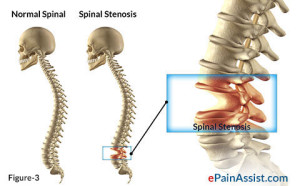7 Facts You May Not Know About Spinal Stenosis
Did you know that the spine of spinal stenosis patients is narrowed in one or more of three parts, including the space at the center of the spine, the canals where nerves branch out from the spine, and the space between vertebrae?
Unfortunately for people with spinal stenosis, this narrowing of the spine puts pressure on the spinal cords and nerves and can cause pain. To test your knowledge further of this painful and disruptive condition, here are some additional facts about spinal stenosis:
· Sometimes patients do not present any symptoms of spinal stenosis at all; other times, symptoms appear slowly and get worse over time.
· Some common symptoms include neck and back pain, pain going down the leg, and foot problems.
· Additional symptoms include numbness, weakness, cramping, or pain in the arms or legs
· The most common cause of spinal stenosis is aging, as changes occur in the spine as people get older, including a thickening of the bands of tissue that supports the spine, larger bones and joints, and bulging bones called bone spurs.
· Two forms of arthritis may affect the spine: osteoarthritis and rheumatoid arthritis. With osteoarthritis, cartilage is worn away, causing pain, bone spurs, and joint problems. With rheumatoid arthritis, the soft tissues of the joints can swell and affect the internal organs and systems.
· While the above symptoms are can help determine whether a patient has spinal stenosis, A specific type of the disease, called cauda equine syndrome, occurs when there is pressure on nerves in the lower back.
· Symptoms of cauda equine syndrome include: loss of control of the bowel or bladder, problems having sex, pain, weakness, or loss of feeling in one or both legs.
If you have any of these symptoms, you should call Dr. Sharma right away. And, if you have any of the other symptoms of spinal stenosis, you should make an appointmentwith Dr. Sharma to talk about your symptoms and to determine a treatment plan.

Categories
Archives
Contact Dr. Mudit Sharma
Phone: (571) 921-4877
Toll Free: (855) 774-6334
Monday – Thursday: 8am – 4pm
Friday: 8am – 2pm
Loudoun County
24430 Stone Springs Blvd, Suite 250
Dulles, VA 20166
Spotsylvania County
4604 Spotsylvania Parkway, Suite 300
Fredericksburg, VA 22408
Prince William County
9625 Surveyor Ct. Suite 320
Manassas, VA 20110

